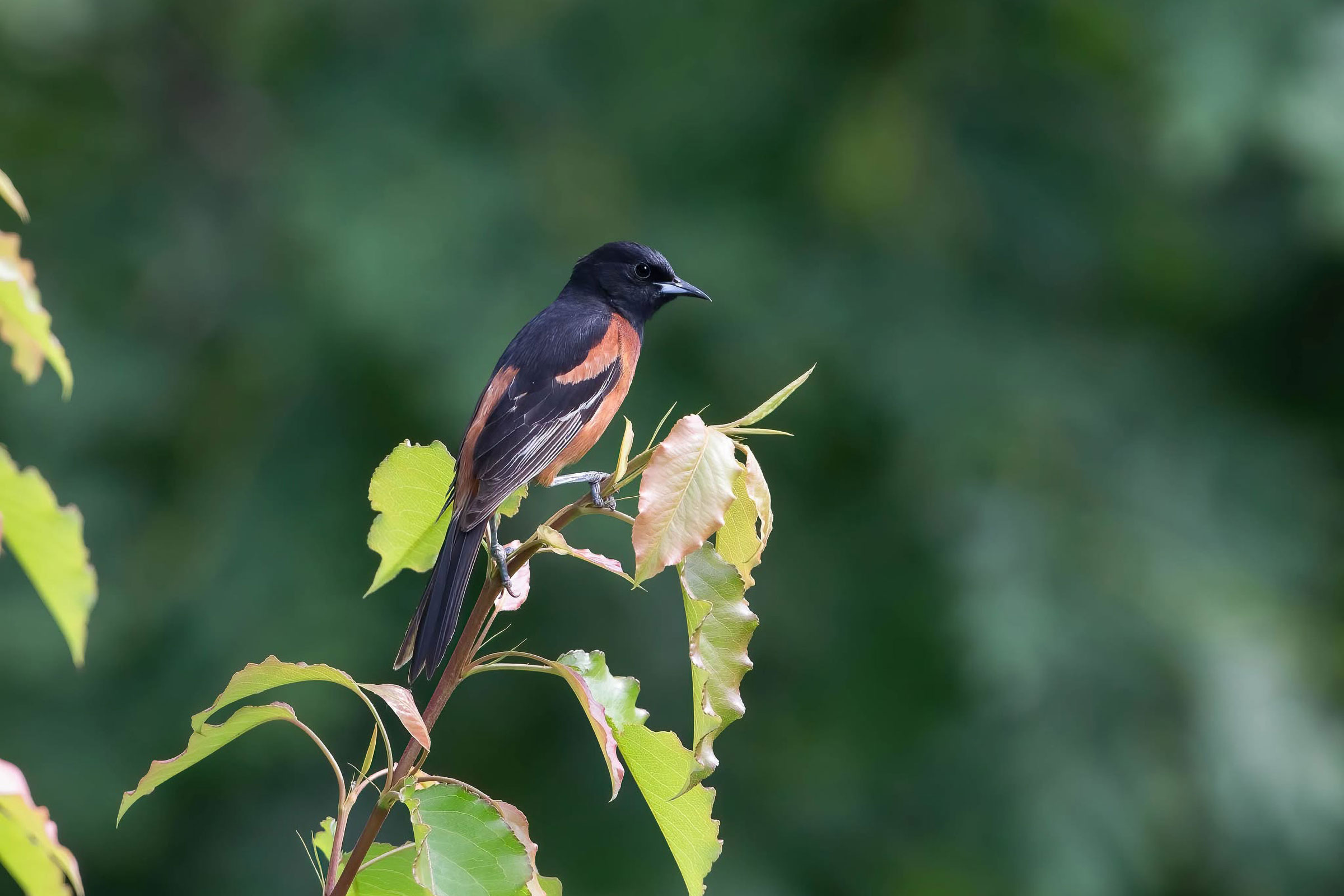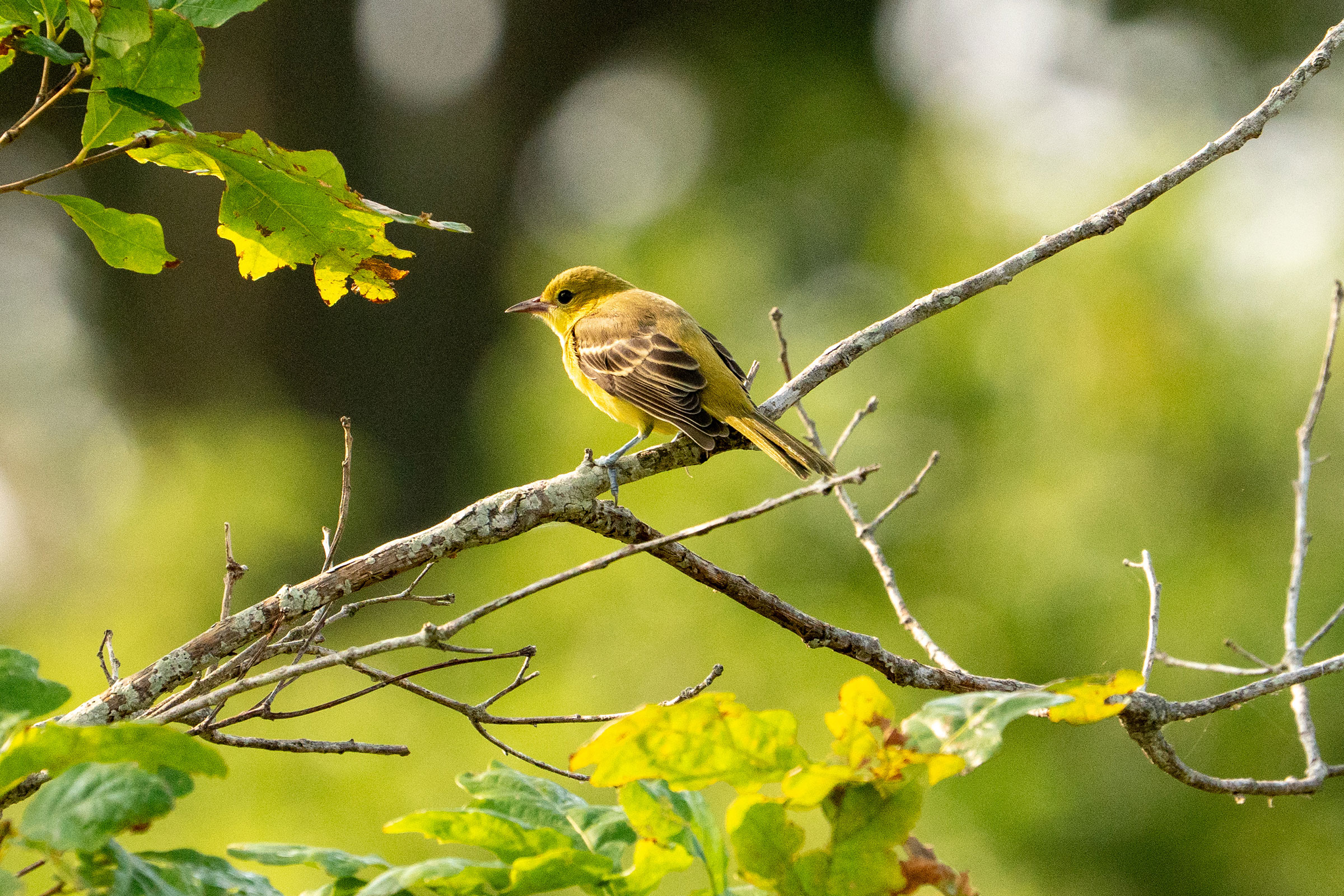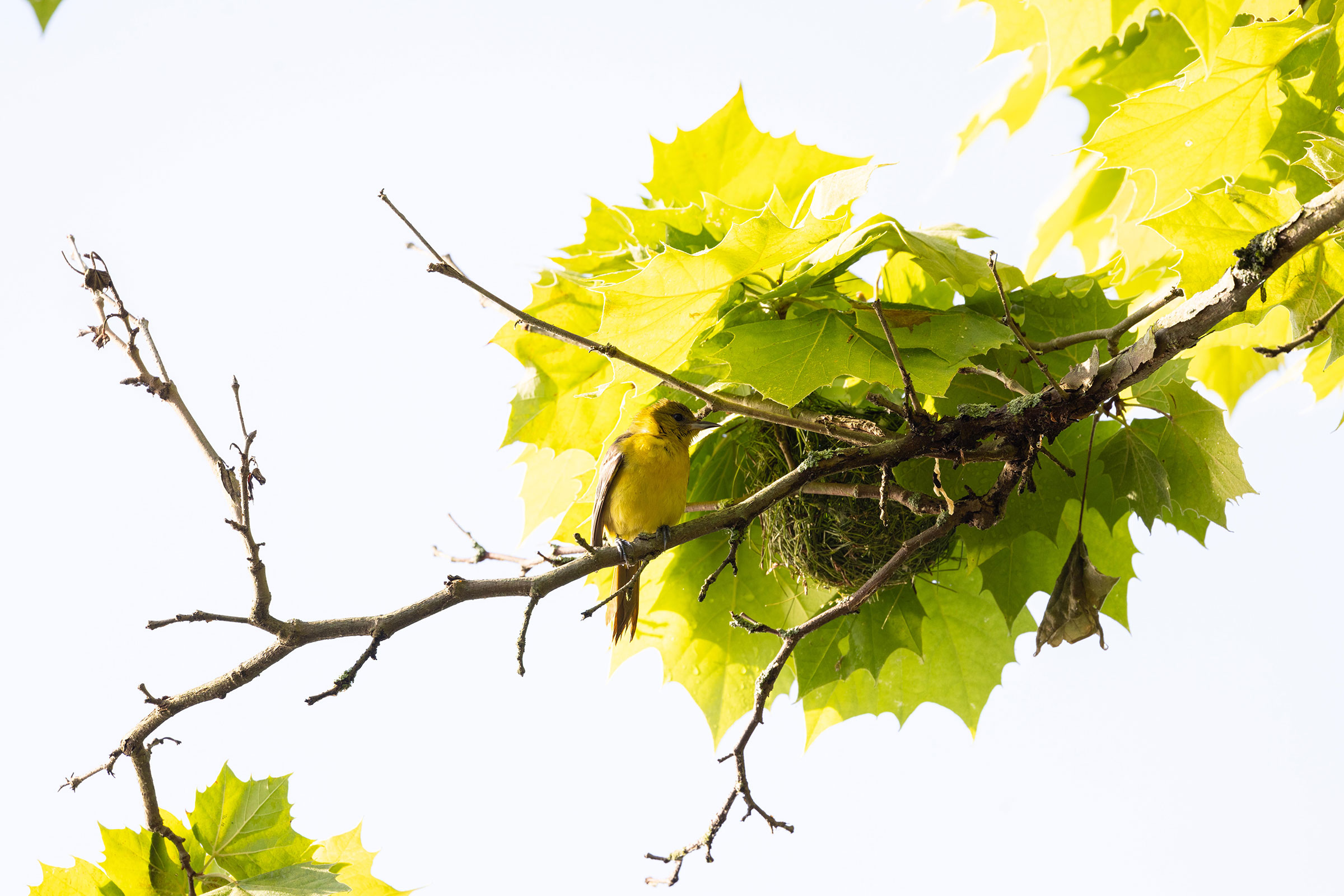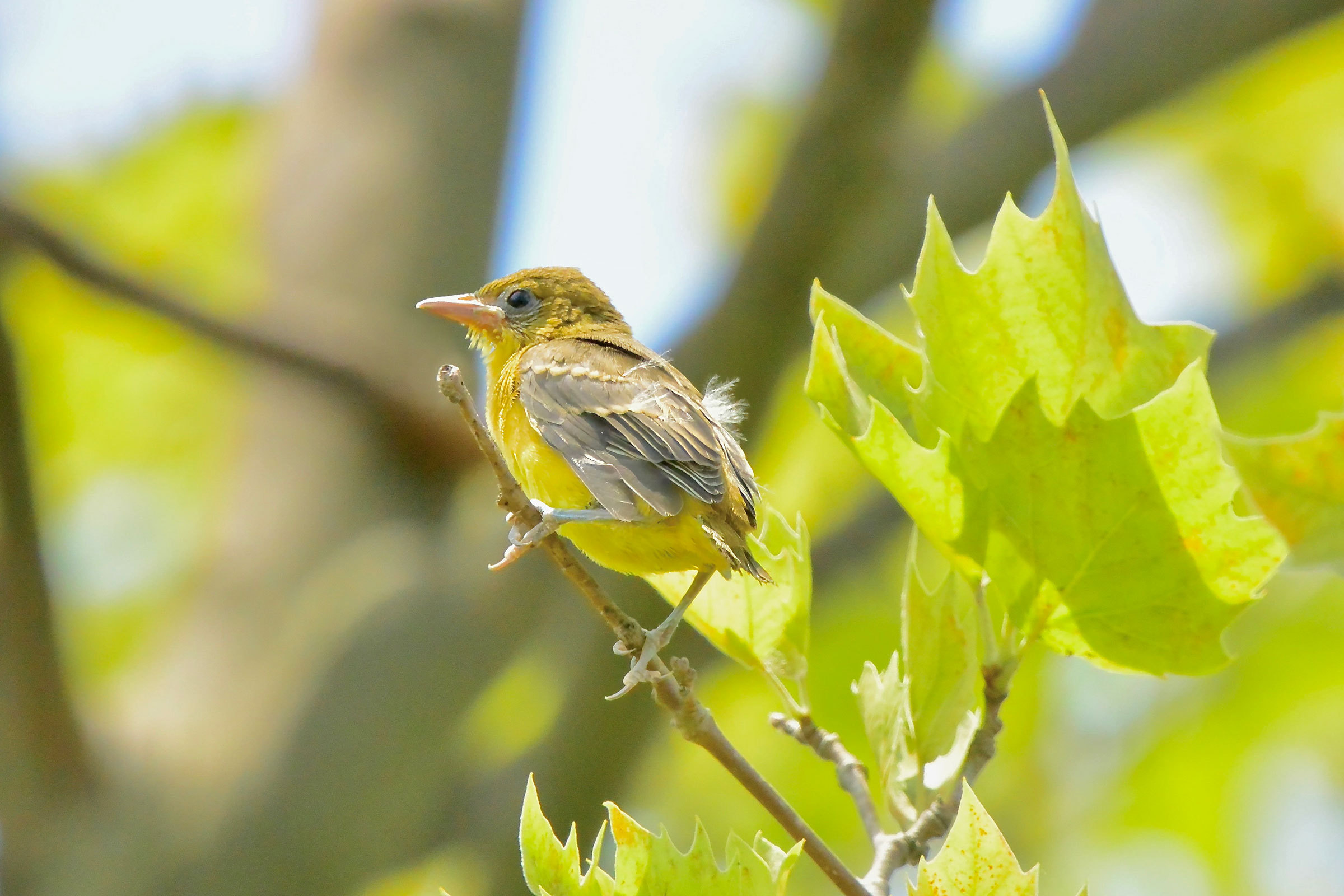Introduction
In addition to the Baltimore Oriole (Icterus galbula), the Orchard Oriole, with burnt orange bellied males and greenish-yellow females, commonly breeds in Virginia. Despite its name, the Orchard Oriole often nests along bodies of water, especially creeks and rivers, where it builds hanging nests from the canopies of large trees. Due to it quickly beating wings, this species tends to resemble small sparrows when flying (Scarf and Kren 2022).
Breeding Distribution
Orchard Orioles are found throughout the state, but they are most likely to occur in the Piedmont and Coastal Plain regions (Figure 1). In the Mountains and Valleys region, the likelihood of this species occurring is more varied as they are less likely to be found on high-elevation, heavily forested ridges. In contrast, they are more likely to be found in areas with agricultural lands and shrubland and grassland habitats.
Between the First and Second Atlases (Figures 1 and 2), the distribution of the Orchard Oriole remained constant across the Commonwealth (Figure 3).
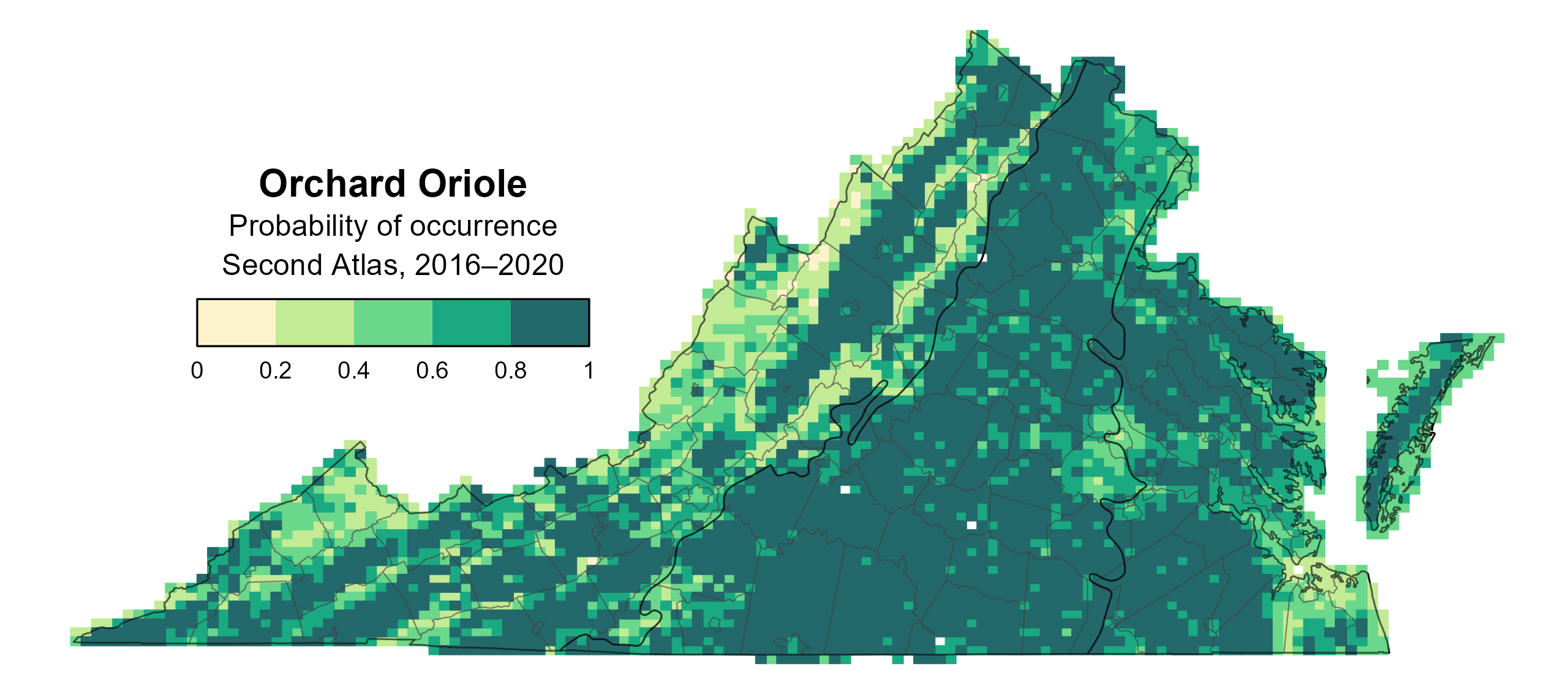
Figure 1: Orchard Oriole breeding distribution based on probability of occurrence (Second Atlas, 2016–2020). This map indicates the probability that this species will occur in an Atlas block (an approximately 10 mi2 [26 km2] survey unit) based on environmental (including habitat) factors and after adjusting for the probability of detection (variation in survey effort among blocks).
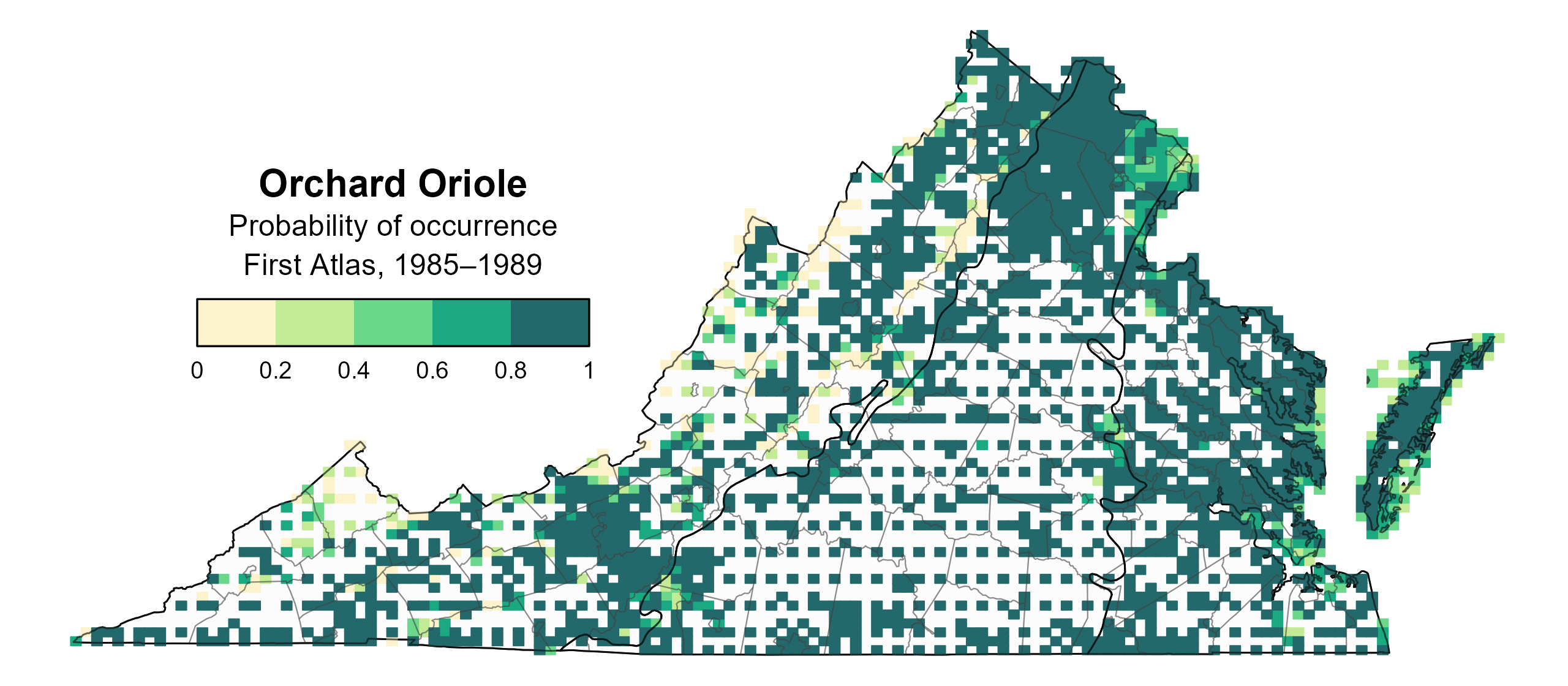
Figure 2: Orchard Oriole breeding distribution based on probability of occurrence (First Atlas, 1985–1989). This map indicates the probability that this species will occur in an Atlas block (an approximately 10 mi2 [26 km2] survey unit) based on environmental (including habitat) factors and after adjusting for the probability of detection (variation in survey effort among blocks). Blocks in white were not surveyed during the First Atlas and were not modeled.

Figure 3: Orchard Oriole change in breeding distribution between Atlases (1985–1989 and 2016–2020) based on probability of occurrence. This map indicates the change in the probability that this species will occur in a block (an approximately 10 mi2 [26 km2] survey unit) between Atlas periods. Blocks with no change may have constant presence or constant absence. Blocks in white were not surveyed during the First Atlas and were not modeled.
Breeding Evidence
Orchard Orioles were confirmed breeders in 406 blocks and 105 counties and probable breeders in an additional 10 counties (Figure 4). Breeding observations were also recorded across the state during the First Atlas, even though fewer observations were recorded, which was likely the result of the greater survey effort involved in the Second Atlas (Figure 5).
The earliest confirmed breeding behavior was recorded at the end of April, when adults were observed carrying nesting materials and building nests. Throughout the season, confirmations were primarily based on observations of adults carrying food (May 10 –August 1), adults feeding young (May 20–August 2), and recently fledged young (May 22–July 21) (Figure 6).
For more general information on the breeding habits of this species, please refer to All About Birds.
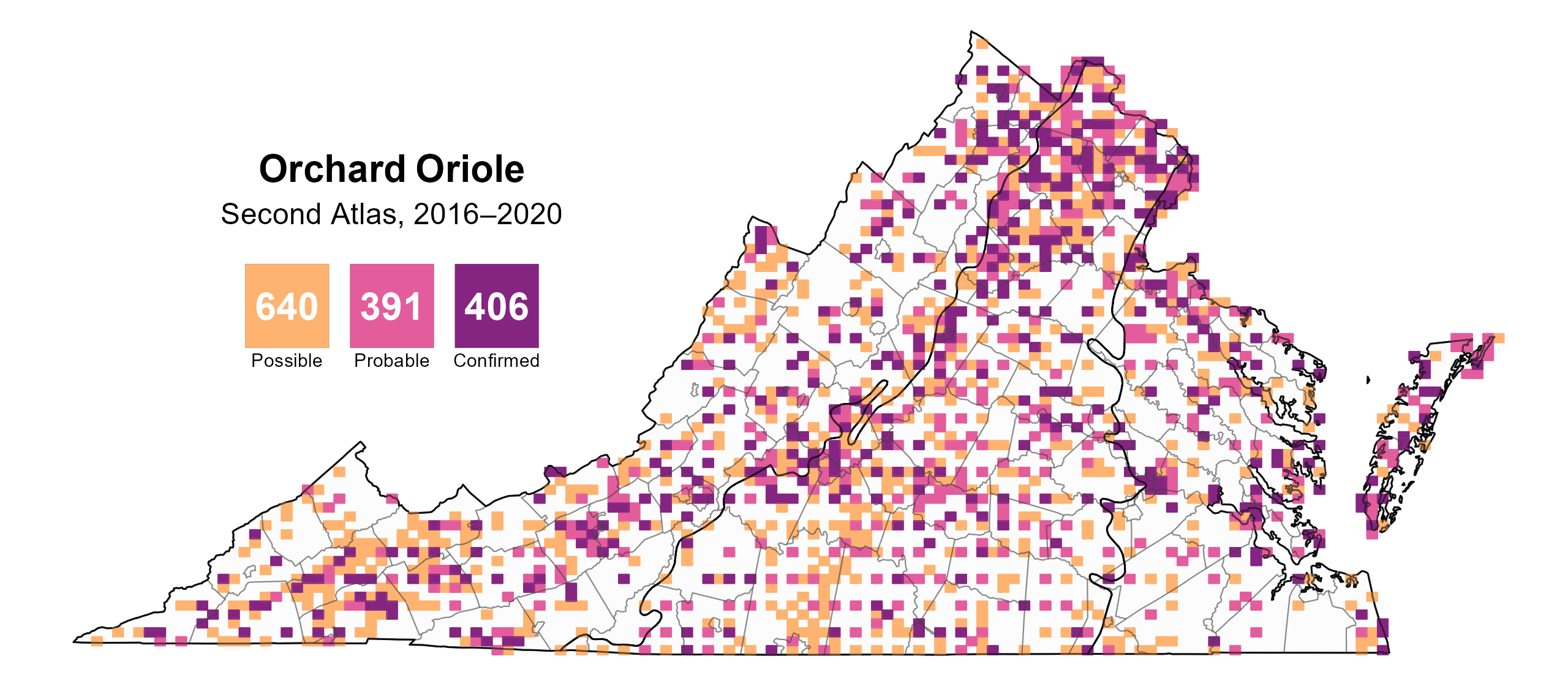
Figure 4: Orchard Oriole breeding observations from the Second Atlas (2016–2020). The colored boxes illustrate Atlas blocks (approximately 10 mi2 [26 km2] survey units) where the species was detected. The colors show the highest breeding category recorded in a block. The numbers within the colors in the legend correspond to the number of blocks with that breeding evidence category.
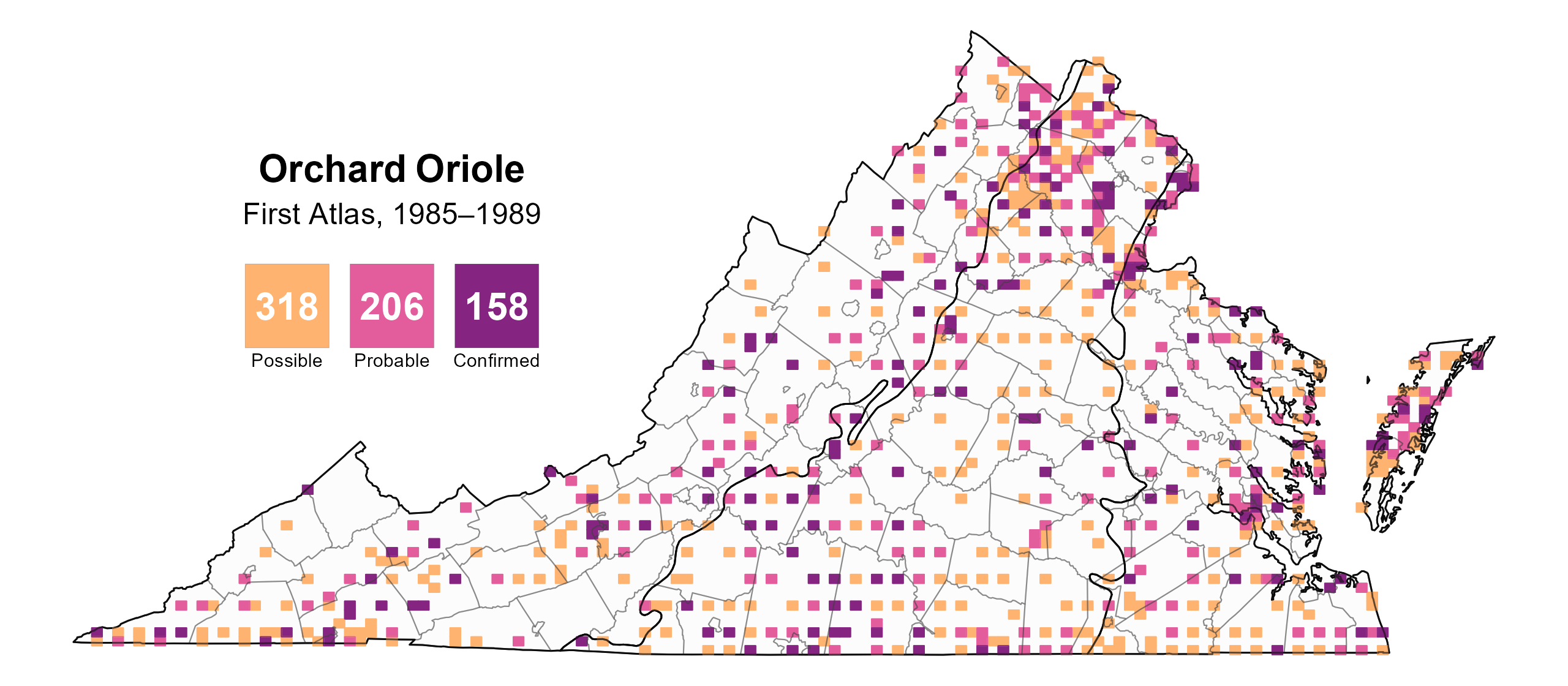
Figure 5: Orchard Oriole breeding observations from the First Atlas (1985–1989). The colored boxes illustrate Atlas blocks (approximately 10 mi2 [26 km2] survey units) where the species was detected. The colors show the highest breeding category recorded in a block. The numbers within the colors in the legend correspond to the number of blocks with that breeding evidence category.
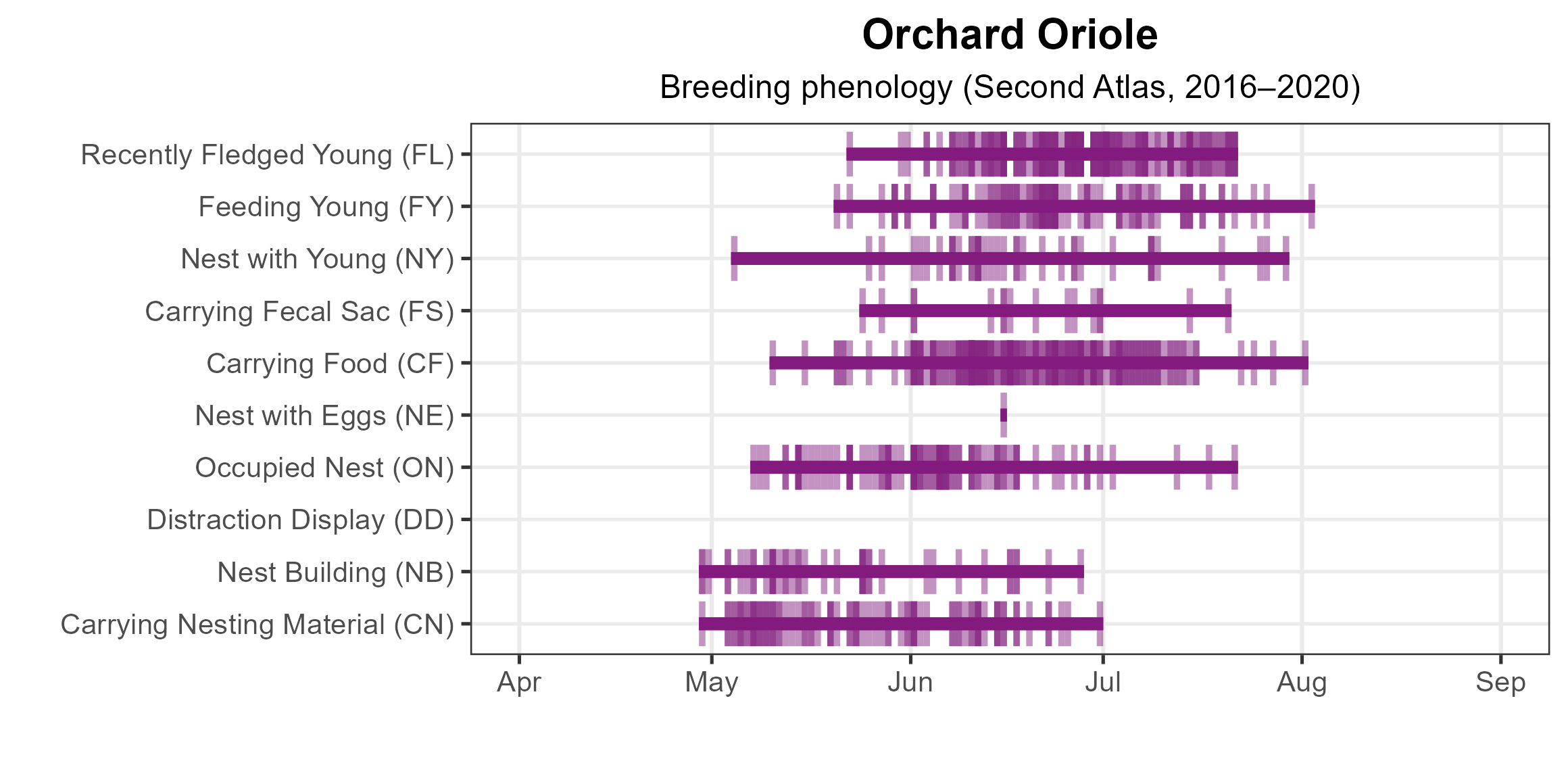
Figure 6: Orchard Oriole phenology: confirmed breeding codes. This graph shows a timeline of confirmed breeding behaviors. Tick marks represent individual observations of the behavior.
Population Status
Orchard Oriole relative abundance was estimated to be highest in the Coastal Plain region, especially along the major rivers (Figure 7). Its estimated abundance was also moderately high throughout the Piedmont region, decreasing and becoming more varied moving into the Mountains and Valleys region.
The total estimated Orchard Oriole population in the state is approximately 322,000 individuals (with a range between 217,000 and 481,000). Based on the North American Breeding Bird Survey (BBS) trend data for Virginia, the Orchard Oriole population showed a nonsignificant increase of 0.17% annually from 1966–2022, and between Atlases, it experienced a similar nonsignificant increase of 0.13% per year from 1987–2018 (Hostetler et al. 2023; Figure 8).

Figure 7: Orchard Oriole relative abundance (Second Atlas, 2016–2020). This map indicates the predicted abundance of this species at a 0.4 mi2 (1 km2) scale based on environmental (including habitat) factors. Abundance values are presented on a relative scale of low to high.
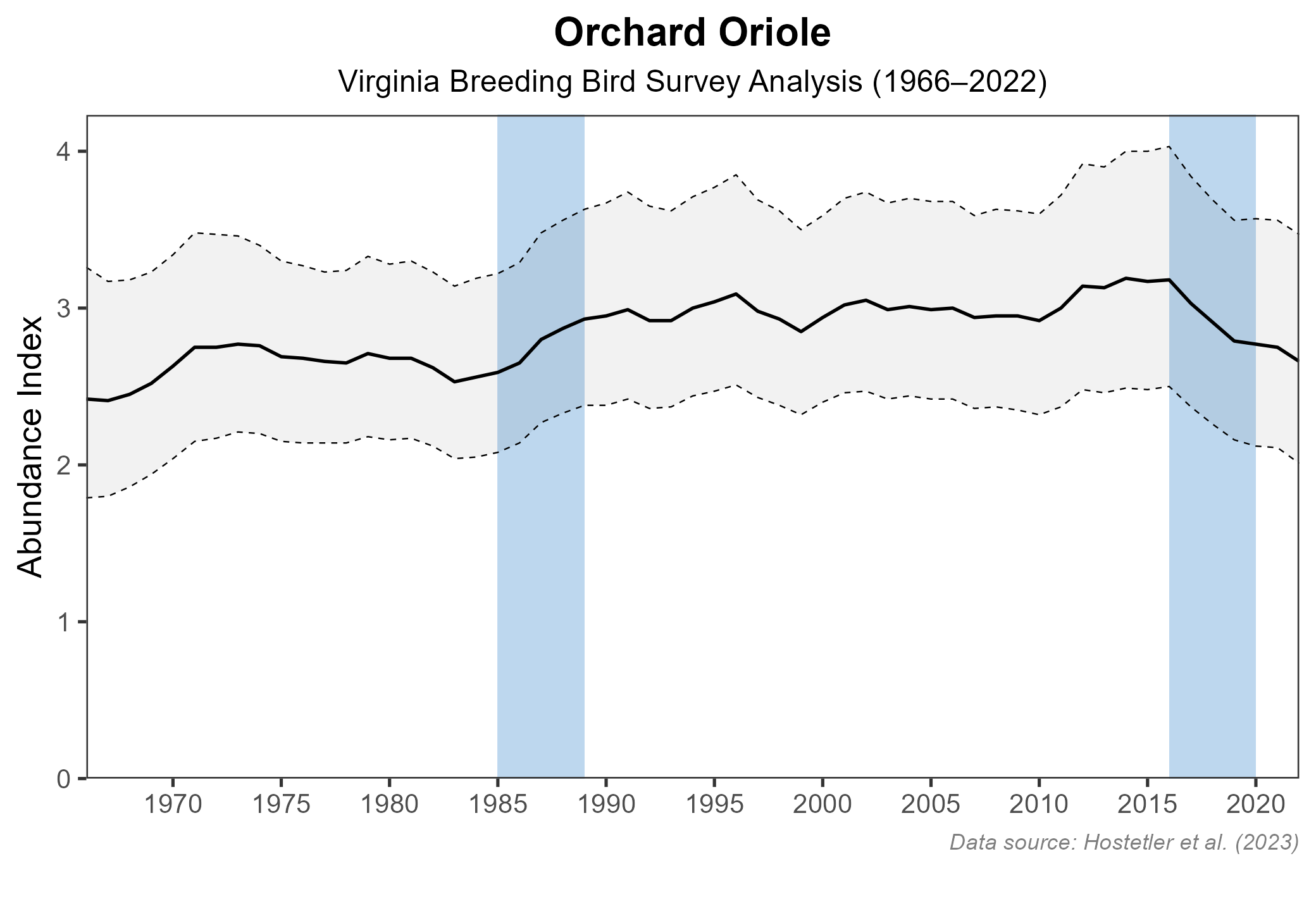
Figure 8: Orchard Oriole population trend for Virginia as estimated by the North American Breeding Bird Survey. The vertical axis shows species abundance; the horizontal axis shows the year. The solid line indicates the estimated population trend; there is a 97.5% probability that the true population trend falls between the dashed lines. The shaded bars indicate the First and Second Atlas periods.
Conservation
Orchard Orioles are common and widespread throughout their range and are not considered a species of conservation concern (Scharf and Kren 2022). There are no specific conservation projects for Orchard Orioles underway in Virginia.
Interactive Map
The interactive map contains up to six Atlas layers (probability of occurrence for the First and Second Atlases, change in probability of occurrence between Atlases, breeding evidence for the First and Second Atlases, and abundance for the Second Atlas) that can be viewed one at a time. To view an Atlas map layer, mouse over the layer box in the upper left. County lines and physiographic regional boundaries (Mountains and Valleys, Piedmont, and Coastal Plain) can be turned on and off by checking or unchecking the box below the layer box. Within the map window, users can hover on a block to see its value for each layer and pan and zoom to see roads, towns, and other features of interest that are visible beneath a selected layer.
View Interactive Map in Full Screen
References
Hostetler, J. A., J. R. Sauer, J. E. Hines, D. Ziolkowski, and M. Lutmerding (2023). The North American breeding bird survey, analysis results 1966–2022. U.S. Geological Survey, Laurel, MD, USA. https://doi.org/10.5066/P9SC7T11.
Scharf, W. C. and J. Kren (2022). Orchard Oriole (Icterus spurius), version 2.0. In Birds of the World (P. G. Rodewald, Editor). Cornell Lab of Ornithology, Ithaca, NY, USA. https://doi.org/10.2173/bow.orcori.02.

